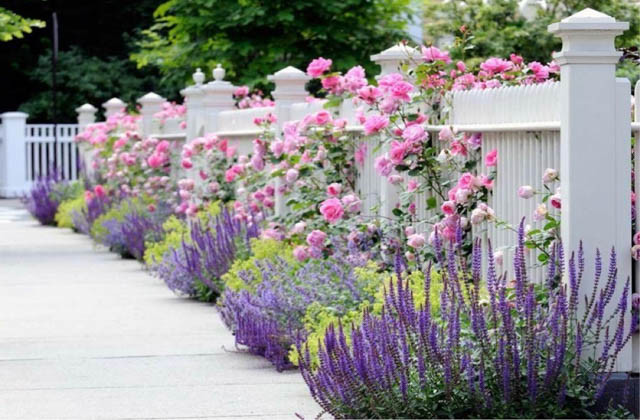Walls and Fences - Inspiring Garden Ideas for all Gardeners
Plants for walls and fences can add visual interest, texture, and color to your garden while making the most of vertical space. These plants can provide privacy, shade, and habitat for wildlife, transforming a plain wall or fence into a living, dynamic feature. Here are some tips for selecting and caring for plants suitable for walls and fences:
- Choose climbers: Climbing plants are well-suited to walls and fences, as they can easily attach themselves or be trained to grow vertically. Examples include climbing roses (Rosa spp.), clematis (Clematis spp.), and honeysuckle (Lonicera spp.).
- Consider espalier: Espalier is a technique of training trees or shrubs to grow flat against a wall or fence, creating a striking and space-saving display. Fruit trees, such as apples (Malus spp.) or pears (Pyrus spp.), are popular choices for espalier.
- Opt for wall shrubs: Wall shrubs are plants that can be trained to grow against a wall or fence but do not naturally climb. They require support or pruning to maintain their shape. Examples include pyracantha (Pyracantha spp.), ceanothus (Ceanothus spp.), and jasmine (Jasminum spp.).
- Plant annual climbers: Annual climbers can provide quick, temporary coverage and vibrant color during the growing season. Examples include morning glory (Ipomoea spp.), nasturtium (Tropaeolum spp.), and sweet peas (Lathyrus odoratus).
- Consider foliage and texture: Choose plants with interesting or colorful foliage to provide year-round interest, even when not in bloom. Examples include ivy (Hedera spp.), Virginia creeper (Parthenocissus quinquefolia), and climbing hydrangea (Hydrangea anomala subsp. petiolaris).
- Assess light and growing conditions: Select plants well-suited to the light exposure and growing conditions of your wall or fence. Be mindful of factors such as soil type, sun exposure, and microclimate.
- Maintain plants regularly: Proper maintenance is essential for healthy, attractive plants on walls and fences. Prune plants to maintain shape and encourage branching, monitor for pests and diseases, and provide adequate water and nutrients.
By selecting and caring for plants that are well-suited to walls and fences, you can create a vibrant, engaging garden feature that maximizes vertical space and enhances the overall appearance of your outdoor area.

